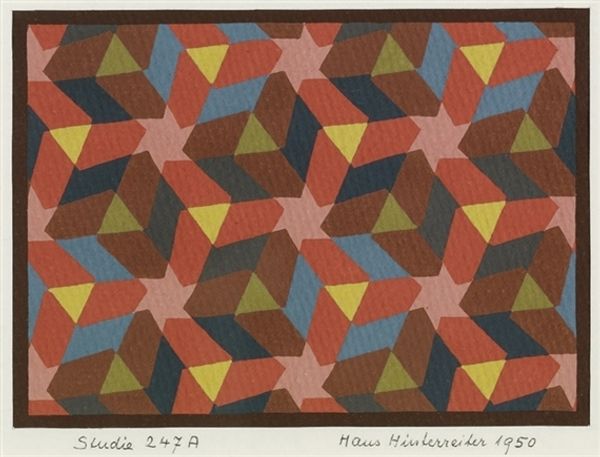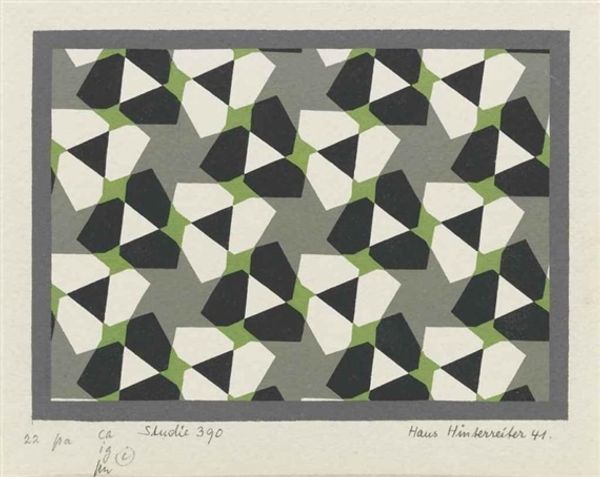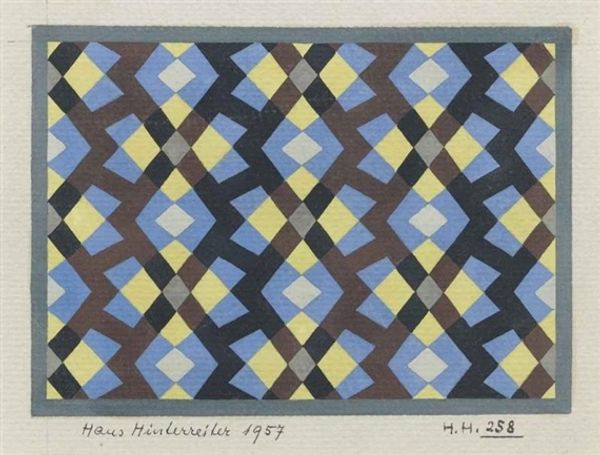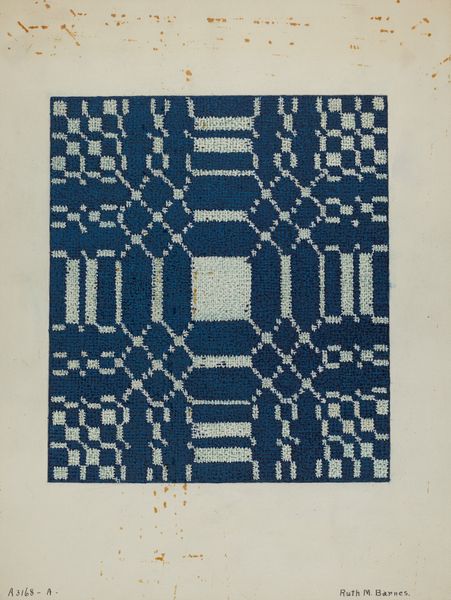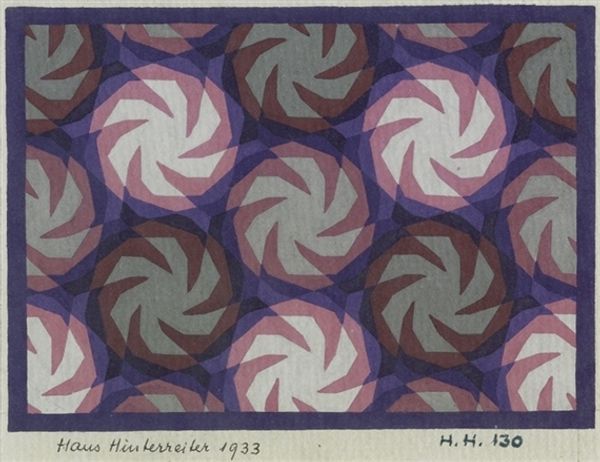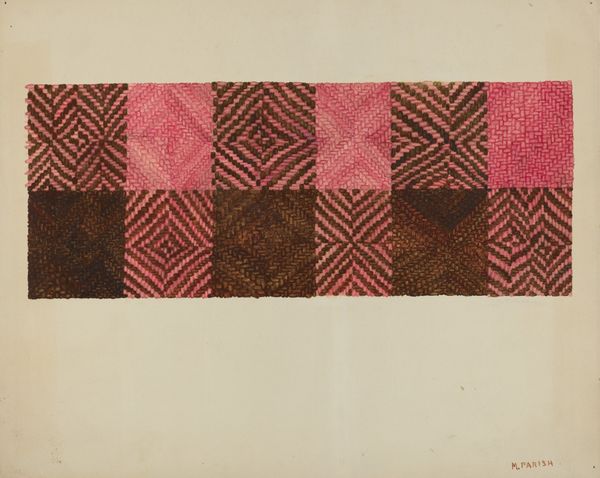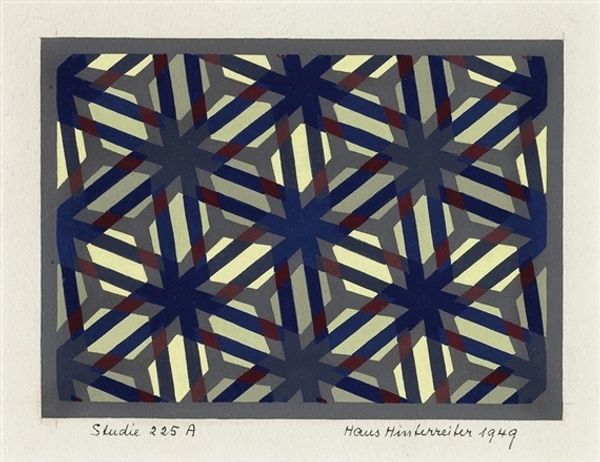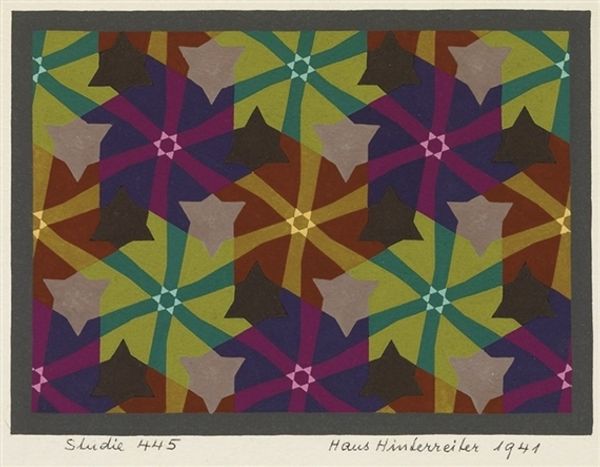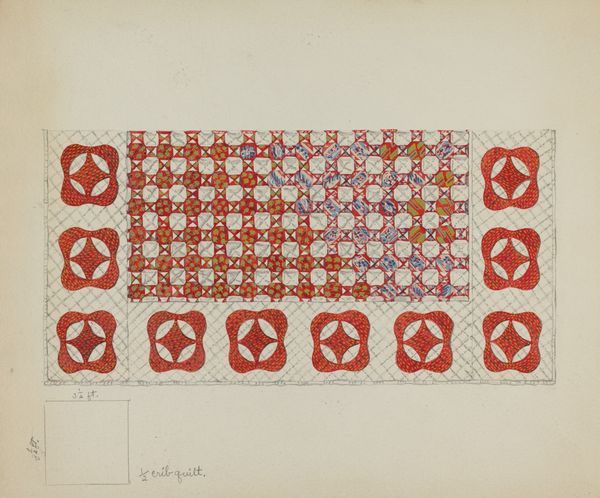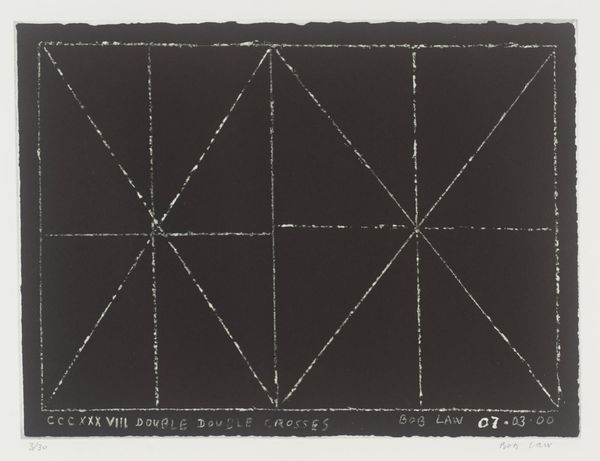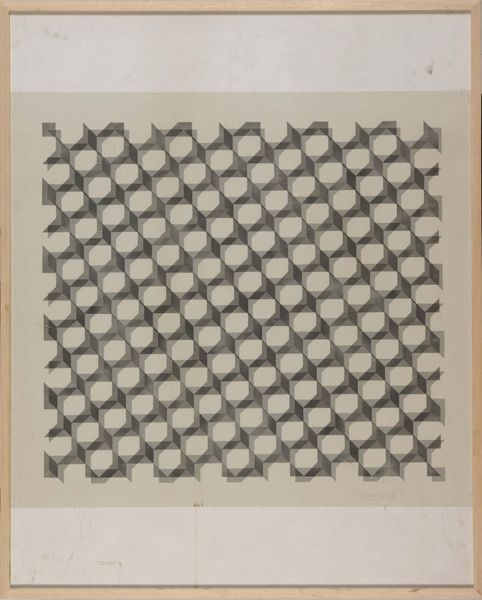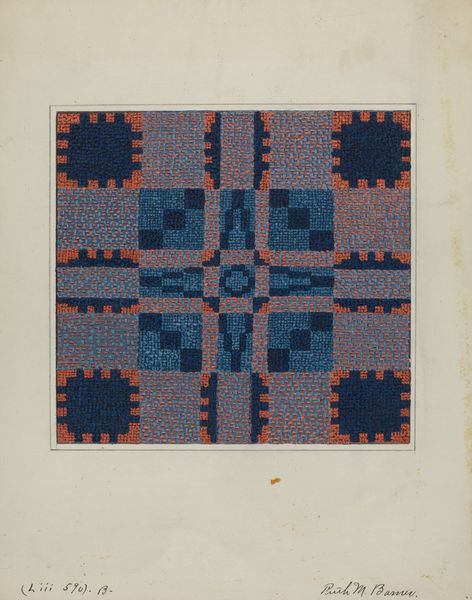
acrylic-paint
#
abstract-expressionism
#
non-objective-art
#
pattern
#
acrylic-paint
#
organic pattern
#
geometric
#
modernism
Copyright: Hans Hinterreiter,Fair Use
Curator: Before us hangs Hans Hinterreiter’s “Studie 248A,” created in 1950 using acrylic paint. Editor: My initial response is a sense of organized chaos. The interlocking shapes, primarily star-like forms and triangles, in reds, grays, and blues, vibrate against the dark background. Curator: It’s a fascinating example of Hinterreiter's exploration of geometric abstraction and non-objective art. He was deeply interested in mathematical relationships and how they could be expressed visually. Editor: Absolutely. There's a push and pull happening that reflects so much of what was occurring socially at that moment. The aftermath of war, and a period of recalibrating existing social systems and ways of being in relation with each other and oneself. There’s something unsettling and off-kilter that feels pertinent. Curator: His work fits within the larger context of modernism. After the second world war, artists were exploring new ways to express themselves beyond traditional representation. He's one of those figures reflecting this wider desire to start over and examine the essential ingredients of artistic creation. Editor: Considering Hinterreiter's interest in math, I think about the codification of knowledge, and its relationship to systems of power and exclusion, as expressed through the seemingly simple visual language of patterns and shapes. What sociopolitical narratives can we decipher through it? Curator: While his practice leaned heavily into the rational, these works still operate as art objects subject to our individual interpretation, just like how we can explore its potential for social critique. And that tension between cold mathematical formalism and warm individual expressivity is something I think that continues to resonate. Editor: True. Seeing how "Studie 248A" uses basic shapes to spark conversations makes one question: does formalism exist to explore its own sake, or does the creation and curation of non-objective art also influence a political purpose within society? I keep finding the rhizomatic shapes hinting at deconstructed versions of societal power hierarchies. Curator: It’s an interesting thought to close on—leaving the viewers with this ambiguity on the connection between politics and art. Editor: Right, and as an intellectual invitation for new audiences to embrace that discomfort and explore where it leads them.
Comments
No comments
Be the first to comment and join the conversation on the ultimate creative platform.
